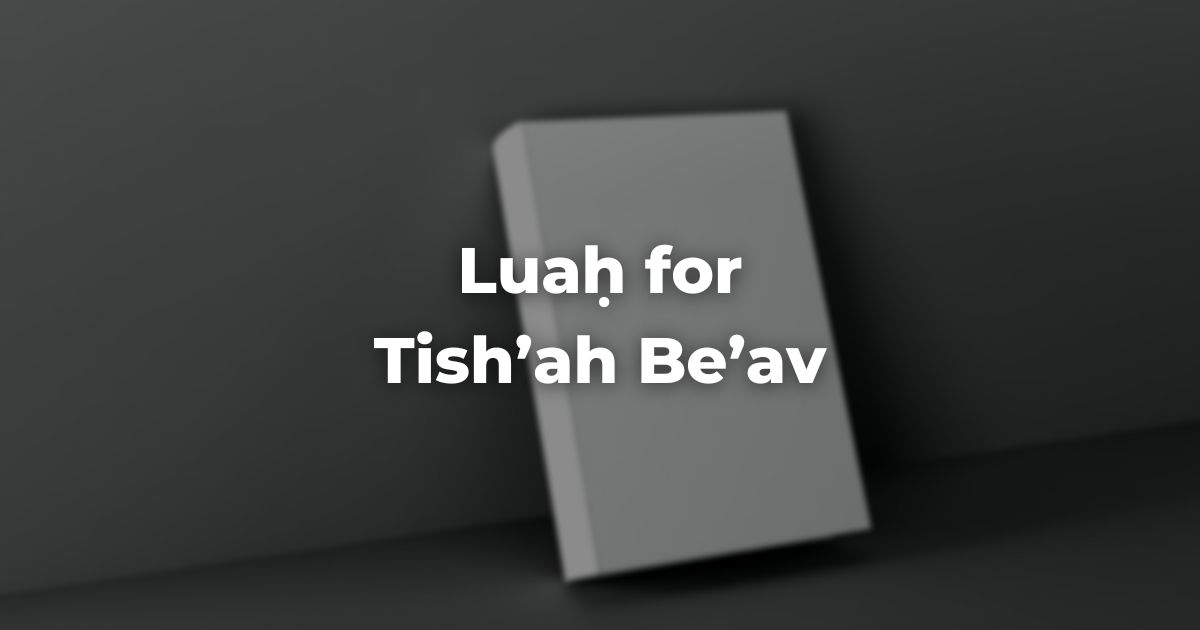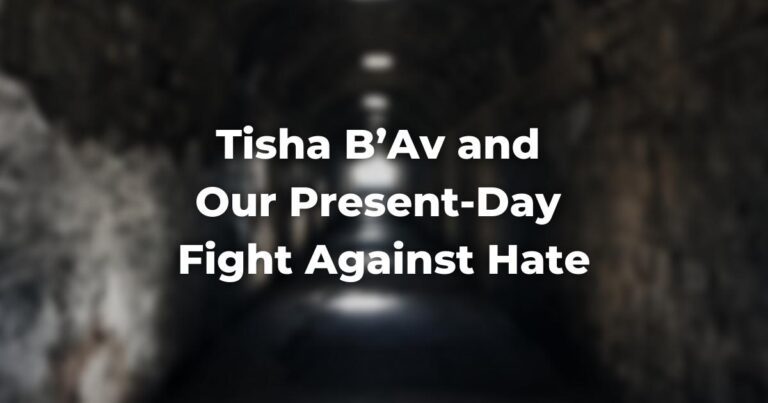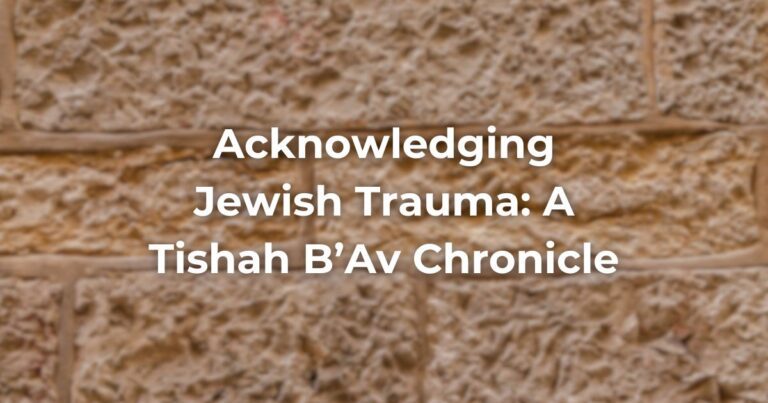NOTE: INFORMATION ON THIS PAGE IS FROM 5782/2022. PLEASE CONSULT YOUR 5783 LUAH FOR ANY CHANGES.
Below you will find the information from Luaḥ Hashanah 5782 for the observance of Tish’ah Be’av generously provided by Rabbi Miles Cohen.
Click here for more information or to purchase the Luaḥ.
Tish’ah Be’av
The 3-week period of mourning culminates in Tish’ah Be’av, the commemoration of the destruction of both the 1st and 2nd Temples in Jerusalem. Over the centuries, other catastrophes that befell the Jewish people also came to be associated with this day of mourning.
In contrast to the 4 minor fast days (see pp. 14, 90, 117, and 191), this fast, like Yom Kippur, lasts the full day. It begins immediately at sunset and ends after dark the next day. Some wait until 3 stars appear, or at least 25 minutes after sunset. Others wait longer. For the proper waiting time in your community, consult your rabbi.
Se’udah Shelishit before Tish’ah Be’av
- Eating meat and drinking wine are permitted.
- If three or more have eaten together, precede בִּרְכַּת הַמָּזוֹן birkat hamazon as usual with בִּרְכַּת זִמּוּן birkat zimmun (i.e., רַבּוֹתַי נְבָרֵךְ rabbotay nevarekh).
- The meal must be completed before sunset.
Tish’ah Be’av Prohibitions
Beginning at Arvit, wearing leather shoes is prohibited.
The other prohibitions take effect at sunset.
The following prohibitions apply throughout Tish’ah Be’av:
- Eating and drinking
- Wearing leather shoes
- Sexual relations
- Bathing (except for minimal washing to remove dirt or after using the toilet)
- Applying skin or bath oils
- Studying Jewish religious texts
- Exceptions are texts that support the mood of the day, such as מְגִלַּת אֵיכָה megillat eykhah (Lamentations), אִיּוֹב iyyov (Job), certain other biblical texts, and rabbinic or other texts dealing with catastrophes in Jewish history.
- Greeting one another, especially with the word שָׁלוֹם shalom
Procedures in the Synagogue
Creating the Tish’ah Be’av Mood
Most congregations remove the table cover, as well as the פָּרֹכֶת parokhet (decorative ark curtain) if the ark has doors or if a plain curtain is available.
- In honor of Shabbat, delay removing the table cover and the פָּרֹכֶת until after the Kaddish following the Amidah of Arvit.
- Sit like mourners—on the floor or on low seats—especially during the chanting of מְגִלַּת אֵיכָה and קִינוֹת kinot (liturgical lamentation poetry). See below.
- Keep lights low; candles or flashlights can provide just enough light for reading.
If it is ascertained (without causing embarrassment) that fewer than 6 are fasting, follow the procedures printed in gray and marked with .
Most congregations restore the table cover and the פָּרֹכֶת just before Minḥah.
Chanting Megillat Eykhah
- Sit on the floor or on low seats or benches.
- Chant מְגִלַּת אֵיכָה.
- When reader reaches the second-to-last verse:
- Congregation chants the verse (5:21) with reader: הֲשִׁיבֵנוּ . . . hashivenu . . .
- Reader concludes the final verse (5:22).
- Congregation chants the previous verse (5:21) aloud.
- Reader alone repeats the same verse (5:21).
Reciting Kinot
- Sit on the floor or on low seats or benches.
- Chant קִינוֹת using melodies suitable for liturgical lamentation poetry.
Luaḥ key:
Page numbers with no prefix refer to the pages in the Luaḥ.
L Lev Shalem for Shabbat and Festivals
S Shabbat and Festival Sim Shalom
W Weekday Sim Shalom
F Full Sim Shalom (both editions)
P Personal Edition of Full Sim Shalom
Av 10 אָב
תִּשְׁעָה בְּאָב Tish’ah Be’av
Sat 6 Aug (evening)
9th of Av (full-day communal fast, begins Shabbat at sunset)
מוֹצָאֵי שַׁבָּת Motsa’ey Shabbat Conclusion of Shabbat
Wait until Shabbat ends.
Before עַרְבִית
For the sheliaḥ/sheliḥat tsibbur:
End your Shabbat by reciting: בָּרוּךְ הַמַּבְדִּיל בֵּין קֹדֶשׁ לְחֹל
Barukh hamavdil beyn kodesh leḥol.
Remove leather shoes. If possible, avoid touching them until after the service. If you brought non-leather shoes to the synagogue before Shabbat, put them on.
Do not remove the table cloth or the פָּרֹכֶת parokhet (decorative ark curtain) at this time.
עַרְבִית
For the sheliaḥ/sheliḥat tsibbur:
Begin Arvit with וְהוּא רַחוּם vehu raḥum. L264 S281 W137 F200
☞ Chant Arvit in a subdued voice, using melodies appropriate for the mournful mood.
☞ Pause before בָּרְכוּ barekhu.
Before בָּרְכוּ
For the congregation:
Remove leather shoes. If possible, avoid touching them until after the service. If you brought non-leather shoes to the synagogue before Shabbat, put them on.
Continue Saturday night Arvit as usual through the Amidah.
קַדִּישׁ שָׁלֵם Full Kaddish L280 S294 W160 F688
☞ Most congregations remove the table cover and the פָּרֹכֶת parokhet.
See “Procedures in the Synagogue,” p. 200.
× הַבְדָּלָה Havdalah☞ Upon seeing a flame (light a candle if necessary), recite only the בְּרָכָה berakhah over a flame. (It is preferred not to recite the בְּרָכָה over electric lights.)
+ Megillah reading:
Chant מְגִלַּת אֵיכָה Megillat Eykhah and קִינוֹת kinot following the procedures in the blue box on p. 200.× וִיהִי נֹעַם Vihi no’am× יוֹשֵׁב בְּסֵתֶר עֶלְיוֹן Yoshev beseter elyon☞ וְאַתָּה קָדוֹשׁ Ve’attah kadosh L216 S293 W159 F684
☞ קַדִּישׁ שָׁלֵם Full Kaddish, but omit sentence: L280 S294 W160 F688× תִּתְקַבַּל Titkabbal . . .עָלֵינוּ Aleynu L281 S297 W163 F696
קַדִּישׁ יָתוֹם Mourner’s Kaddish L282 S298 W164 F698× הַבְדָּלָה Havdalah
After עַרְבִית
☞ If you wore leather shoes:
Put on the shoes to return home.
Wear non-leather shoes for the remainder of the fast.
☞ Do not recite Kiddush Levanah before Monday night after Arvit.
Sun 7 Aug שַׁחֲרִית
☞ Do not wear tallit or tefillin.
If you wear a טַלִּית קָטָן tallit katan,
put it on, but do not recite the בְּרָכָה berakhah.
Weekday Shaḥarit W1 F2
☞ Chant the service in a subdued voice, using melodies appropriate for the mournful mood.× Psalm for Sunday
Silent weekday Amidah:
Do not add עֲנֵנוּ Anenu.
6 or more fasting
Fewer than 6 fasting
Add עֲנֵנוּ Anenu in שׁוֹמֵעַ תְּפִלָּה Shome·a tefillah.
Replace תַּעֲנִיתֵנוּ ta’anitenu (6th word) with
הַתַּעֲנִית הַזֶּה hata’anit hazeh. W38 F110
All minyanim
× בִּרְכַּת כֹּהֲנִים Birkat kohanim × אָבִינוּ מַלְכֵּנוּ Avinu malkenu× תַּחֲנוּן Taḥanun
חֲצִי קַדִּישׁ Short Kaddish W64 F136
Fewer than 6 fasting
Omit the entire TorahRefers to the first five books of the Hebrew Bible, the Tanakh, also called the Five Books of Moses, Pentateuch or the Hebrew equivalent, Humash. This is also called the Written Torah. The term may also refer to teachings that expound on Jewish tradition. Read more service.
Continue with קִינוֹת kinot.
6 or more fasting
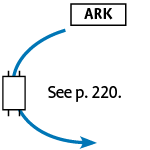
+ TORAH SERVICE W65 F138
☞ Spread a טַלִּית tallit as a temporary reading table cover.
Remove 1 scroll from ark.
Torah 3 aliyot from וָאֶתְחַנַּ֖ן Va’et·ḥannan
דְּבָרִים Devarim (Deuteronomy) 4:25–40
14:25–29 230–35 M36–40 W338 P973
חֲצִי קַדִּישׁ Short Kaddish W71 F146
Open, raise, display, and wrap scroll.
Recite the בְּרָכָה berakhah before the haftarah. W74 F410 P989
This בְּרָכָה may be chanted using אֵיכָה melody.
חֲצִי קַדִּישׁ Short Kaddish W71 F146
Open, raise, display, and wrap scroll.
Recite the בְּרָכָה berakhah before the haftarah. W74 F410 P989
This בְּרָכָה may be chanted using אֵיכָה melody.
Haftarah יִרְמְיָהוּ Yirmeyahu ( Jeremiah) 8:13–9:23° W339 P975
☞ °This haftarah is chanted with אֵיכָה melody, except for the last two verses (9:22–23), which are chanted with the regular haftarah melody. (Some chant also the last verses with אֵיכָה melody.)
Recite the 3 concluding haftarah blessings,
through מָגֵן דָּוִד Magen david. W74 F410 P989.
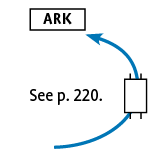
Return scroll to ark. W76 F150
All minyanim
Sit on the floor or on low seats or benches.
Recite קִינוֹת kinot.
Some chant מְגִלַּת אֵיכָה Megillat Eykhah, either at this point or at the end of the service.
Follow the procedures in the blue box on p. 200.
אַשְׁרֵי Ashrey W78 F152× לַמְנַצֵּחַ Lamenatse·aḥ (Psalm 20)☞ וּבָא לְצִיּוֹן Uva letsiyyon, but omit 2nd verse: W80 F156× וַאֲנִי זֹאת בְּרִיתִי אוֹתָם Va’ani zot beriti otam . . .☞ קַדִּישׁ שָׁלֵם Full Kaddish, but omit sentence: W82 F158× תִּתְקַבַּל Titkabbal . . .עָלֵינוּ Aleynu W83 F160× Psalm for Sunday
קַדִּישׁ יָתוֹם Mourner’s Kaddish W84 F162
מִנְחָה
☞ Immediately before Minḥah, most congregations restore the table cover and the פָּרֹכֶת parokhet.
☞ Wear טַלִּית tallit and תְּפִלִּין tefillin, reciting the בְּרָכוֹת berakhot in the usual manner. W2–3 F4
☞ Use regular weekday melodies throughout this service.
+ Psalm for Sunday (Psalm 24) W85 F22
+ קַדִּישׁ יָתוֹם Mourner’s Kaddish W100 F52
אַשְׁרֵי Ashrey W120 F164
חֲצִי קַדִּישׁ Short Kaddish W121 F166
Fewer than 6 fasting
Omit the entire Torah service.
Continue with the silent Amidah.
6 or more fasting
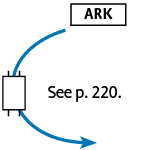
+ TORAH SERVICE W65 F138
If the table cover was removed and has not yet been restored, spread a טַלִּית tallit as a temporary table cover.
Remove 1 scroll from ark.
Torah 3 aliyot from כִּ֣י תִשָּׂ֞א Ki tissa
שְׁמוֹת Shemot (Exodus) 32:11–14, 34:1–10
1 32:11–14° 2 34:1–3 M34:4–10° W341 P979
☞ °At each of the 3 passages indicated below, follow this procedure:
- The reader pauses before the indicated text.
- The congregation recites the indicated text.
- Afterward, the reader chants the indicated text in the manner of the cantillation of High Holiday Torah reading.
32:12
שׁ֚וּב מֵֽחֲר֣וֹן אַפֶּ֔ךָ וְהִנָּחֵ֥ם עַל־הָֽרָעָ֖ה לְעַמֶּֽךָ:
34:6–7
יי֣ | יי֔ אֵ֥·ל רַח֖וּם וְחַנּ֑וּן אֶ֥רֶךְ אַפַּ֖יִם וְרַב־חֶ֥סֶד וֶֽאֱמֶֽת:
נֹצֵ֥ר חֶ֨סֶד֙ לָֽאֲלָפִ֔ים נֹשֵׂ֥א עָוׁ֛ן וָפֶ֖שַׁע וְחַטָּאָ֑ה וְנַקֵּה֙
34:9
:וְסָֽלַחְתָּ֛ לַֽעֲוׁנֵ֥נוּ וּלְחַטָּאתֵ֖נוּ | וּנְחַלְתָּֽנוּ
To preserve the sense of this passage, maintain the appropriate pause after the טִפְּחָ֖א ( וּלְחַטָּאתֵ֖נוּ).
☞ Do not recite חֲצִי קַדִּישׁ Short Kaddish after maftir aliyah.
Open, raise, display, and wrap scroll.
Recite the בְּרָכָה berakhah before the haftarah. W74 F410 P989
Haftarah יְשַׁעְיָהוּ Yesha’yahu (Isaiah) 55:6–56:8 W342 P980
☞ Chant this haftarah using the regular haftarah melody.
Recite the 3 concluding haftarah blessings, through מָגֵן דָּוִד Magen david. W74 F410 P989.
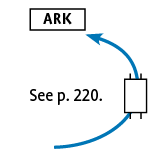
Return scroll to ark. W76 F150
חֲצִי קַדִּישׁ Short Kaddish W121 F166
All minyanim
Silent weekday Amidah:
+ נַחֵם Naḥem W126 F176
If fasting
+ עֲנֵנוּ Anenu, in שׁוֹמֵעַ תְּפִלָּה Shome·a tefillah W127 F178
All
× שָׁלוֹם רָב Shalom rav
+ שִׂים שָׁלוֹם Sim shalom W131 F184
Repetition of the weekday Amidah:
6 or more fasting
+ עֲנֵנוּ Anenu, before רְפָאֵנוּ Refa’enu W124 F172
All minyanim
+ נַחֵם Naḥem W126 F176
Fewer than 6 fasting
Add עֲנֵנוּ Anenu in שׁוֹמֵעַ תְּפִלָּה Shome·a tefillah.
Replace תַּעֲנִיתֵנוּ ta’anitenu (6th word) with
הַתַּעֲנִית הַזֶּה hata’anit hazeh. W127 F172
All minyanim
+ בִּרְכַּת כֹּהֲנִים Birkat kohanim W131 F184 × שָׁלוֹם רָב Shalom rav
+ שִׂים שָׁלוֹם Sim shalom W131 F184
× אָבִינוּ מַלְכֵּנוּ Avinu malkenu× תַּחֲנוּן Taḥanun
☞ קַדִּישׁ שָׁלֵם Full Kaddish with תִּתְקַבַּל Titkabbal W134 F194
עָלֵינוּ Aleynu W135 F196
קַדִּישׁ יָתוֹם Mourner’s Kaddish W136 F198
Av 11 אָב
Sun 7 Aug עַרְבִית
If the table cover and פָּרֹכֶת parokhet have not yet been restored, restore them before beginning Arvit.
Weekday Arvit as usual L264 S281 W137 F200
+ Havdalah (delayed from Saturday night) S299 W165 F700× הִנֵּה אֵ·ל יְשׁוּעָתִי Hinneh el yeshu’ati+ בּוֹרֵא פְּרִי הַגָּפֶן Bo·re peri hagafen× בּוֹרֵא מִינֵי בְשָׂמִים Bo·re miney vesamim× בּוֹרֵא מְאוֹרֵי הָאֵשׁ Bo·re me’orey ha’esh+ הַמַּבְדִּיל בֵּין קֹדֶשׁ לְחֹל Hamavdil beyn kodesh leḥol
☞ Do not recite Kiddush Levanah until Monday night after Arvit.
At home
☞ Do not eat meat or drink wine until morning.
Av 12 אָב
Mon 8 Aug (night)
After Arvit if the moon is visible:
קִדּוּשׁ לְבָנָה Kiddush Levanah L286 W167 F704
For procedures and instructions, see p. 223.
Copyright © 2010–2022 by Miles B. Cohen and Leslie Rubin. Reprinted with permission of the publisher.
Authors
-

Rabbi Miles B. Cohen, ordained by the Jewish Theological Seminary, developed curriculum material at Melton Research Center for more than twenty years. He taught students preparing to be rabbis, cantors, educators, and lay leaders. He lectures and conducts workshops across North America on synagogue practice. Rabbi Cohen creates guides and interactive software to learn to chant Torah, haftarah, and megillot, and for learning nusaḥ skills and Hebrew grammar.
View all posts -

Leslie Rubin is a professional editor, specializing in Jewish studies, who has edited and indexed numerous books on technical and academic subjects. In addition, she developed educational and training materials, with an emphasis on usability and concision.
View all posts

